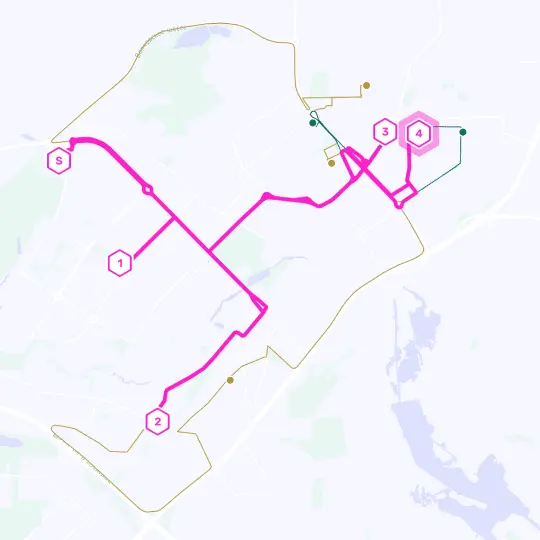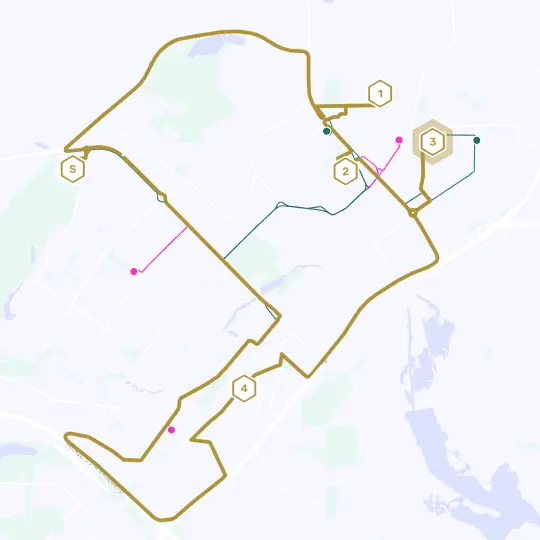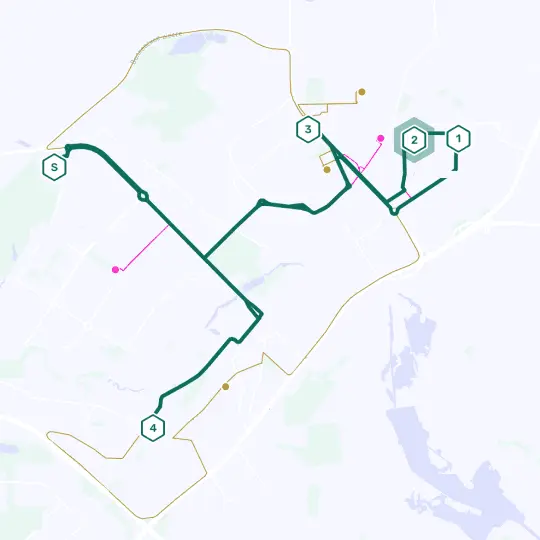Field Service Scheduling
Prompt and timely maintenance and repair — that's the key to reliable operation of any equipment, from home appliances to large production facilities.
In today’s world, humans are constantly interacting with hundreds of different devices and complex systems during their daily routines.
Any action, even simple ones like buying coffee at a street stall, requires the flawless operation of multiple networks and objects. If you want to buy a cup of coffee, it would require perfect functioning of the power supply system, the Internet, the banking system, the acquiring services, and, finally, the coffee machine.
If at least one link in this chain stops functioning as expected—for example, a power line breaks two blocks from the stall, or the boiler in the coffee machine bursts—you will no longer be able to start the day with your favorite espresso.
It would seem that an unpurchased cup of coffee is easy to bear, but when it comes to incidents on a larger scale, the damage can be colossal. An accident and subsequent downtime at a power plant could paralyze the work of a huge urban and production area. Or, for example, a faulty security system would not be able to protect the home from burglary or fire.
The Northeast blackout that happened on August 14, 2003, was one of the largest Northern American technogenic failures of the first XXI century decade. About 10 million people in Canada and 40 million people in the US had to spend anywhere from 2 hours to 4 days without power. During the failure, many airports stopped working, including Toronto Pearson International Airport and all New York City airports. Passengers stuck in the subways of large cities like New York and Toronto had to be urgently evacuated.
One of the reasons for the accident was the lack of personnel or a properly working dispatching system, which could have prevented what happened.
In order for technology to operate flawlessly and remain stable, it’s necessary to quickly eliminate failures and breakdowns, as well as to regularly conduct preventative maintenance. All this becomes a job for service engineers.
Field service planning
The quality of service is partly due to the engineers' skills, which are shown directly during the process of repair and maintenance works. However, field service planning also plays an important role in the production process, especially regarding the processing and distribution of customers' requests, logistics management, and routing.
Field service scheduling is both crucial and complex.
The clients' requests to appoint, reschedule, or cancel an engineer's visit can be received at any time. Regardless of the time they were received, an operator must promptly approve the works' date and time with every client, considering the urgency of their request and the engineers' current schedule. At this point, they need to be able to quickly adjust the schedule and the engineers' routes.
Different types of work may have different degrees of urgency, costs, durations, and so on. All these features must be kept in mind while scheduling the service engineers' operation to ensure optimal employee workload and avoid both downtime and rush situations.
Often, the operator has to schedule the work of an entire team of engineers, as some sites might require several specialists with different skill sets at once. Moreover, from time to time, employees may replace each other, transfer their cases to colleagues, or train interns. All these situations need to be taken into account when drawing up a schedule.
While scheduling for each engineer, the operator must calculate their route thoroughly. The less time the employee spends on the road and the more requests they manage to fulfill, the lower the transportation costs and the higher the engineer’s productivity will be. In order to achieve better results, many details must be considered during routing, such as time windows, traffic jams, parking spaces, the employee's skill set, the availability of spare parts, the work's duration at each point of the route, and scheduled breaks.
In companies that offer a small variety of service options and have a small staff of engineers, scheduling routing and fieldwork can be done manually. It is enough to delegate this task to a single operator, who then processes the clients' requests, coordinates the time of the engineer's visit, and draws up both a work schedule and route sheets.
If the service company has hundreds of incoming service requests per day, and thousands of clients, the field service scheduling process becomes a real challenge.
Field service scheduling problems
The more requests, the longer it takes to process them.
When the company gets a lot of incoming requests, the client has to spend some time holding the line or waiting for a call back. Moreover, if the maintenance date is not agreed upon during the first conversation with the operator, the client will have to wait again. In this case, even if the service is provided properly, the client may be dissatisfied, especially if their request is urgent.
Manual operation increases the volume of errors.
Processing and distributing requests, having scripted phone conversations, and manual route calculation are quite monotonous and tedious processes. The more identical actions an operator has to perform, the easier it is to make a mistake due to inattention or fatigue, especially when working in emergency mode.
The more requests, the more complex the routing will be.
Manual route planning often fails to consider many small details that may significantly affect the route’s quality. It's not surprising, as nobody can be expected to mentally calculate the optimal routes for 300 points, taking into account the engineers' schedule and the types of work at the sites, especially in a limited time. Meanwhile, inefficient routing may heavily increase transportation costs.
The more requests, the more difficult it is to distribute them among engineers.
While distributing the requests among employees, it is important to keep in mind not only the target daily volume of orders fulfilled per engineer but also travel time. Furthermore, you need to take into account whether the engineer will be able to meet the specified time intervals and whether their schedule includes breaks. It might be challenging. Let's say a company has 50 engineers; drawing up a customized schedule for each of them could take a full working day, even though it's just a small part of an operator's job.
These and many other problems associated with manual routing and field service scheduling usually appear during the company's growth. They begin to manifest in full force when the business makes a significant leap, such as opening a branch in a new region. Often, the load on the customer service department during this period reaches a critical volume, and it becomes difficult to maintain a high level of service, while transportation costs continue to rise.
What to do in order to prevent a critical situation?
How to make field service scheduling more effective?
Automate the processing of clients' requests.
Automated request processing means your clients no longer have to tediously wait in line. What’s more, automating the monotonous low-level work will let your employees manage their working time more efficiently. Instead of having to make several approving calls for each client, the operator will only need to select one of the available time slots and can schedule an engineer's visit in a matter of seconds.
During the work on the joint project with a security systems provider, the Veeroute team developed a specified tool that schedules an engineer's visit in just a couple of clicks — the “checkerboard.” It is a simple interface that looks like a table, in which the columns are the days of the week and the rows are three-hour time intervals.
Date/Time Sun Mon Tue Wed Thu Fri Sat 9 am - 12 pm 10 000 2 210 1 500 200 619 1 120 580 12 pm - 3 pm 10 000 1400 670 470 50 710 580 3 pm - 6 pm 10 000 150 950 619 650 720 470 6 pm - 8 pm 10 000 10 000 10 000 10 000 10 000 10 000 10 000 Mon, 3 pm - 6 pm, 150 Wed, 9 am - 12 pm, 200
Wed, 9 am - 12 pm, 200 Thu, 12 pm - 3 pm, 50
Thu, 12 pm - 3 pm, 50
The cells of the “checkerboard” are highlighted in different colors depending on the slot's availability, and they contain information about the cost of an engineer's visit at a given time. The fieldwork scheduling now takes only 7 seconds—but before the implementation of the “checkerboard,” the operator had to make about 4 phone calls to plan an engineer's visit.
Optimize the routes of service engineers.
Route optimization lets you not only drastically reduce transportation costs but also increase the productivity of service engineers.
The less time an engineer spends on the road, the less wear and tear on the vehicle and the lower the cost of fuel and lubricants.
The closer to each other the objects to visit are located, the more requests the service engineer will be able to fulfill.
Using the optimizer is a way to solve the routing problem quickly and efficiently. During trip planning, Veeroute considers all the details that may affect the quality of routes. For example, while calculating the service engineers' routes, the optimizer takes into account the type of work, the type of client, and the locations of each object and engineer. The optimization engine also considers the employee’s place of residence so that their route starts from the closest point.
As a result of the joint work, Veeroute and the security systems provider were able to achieve brilliant results. The simultaneous use of the “checkerboard” and the Veeroute combinatorial optimizer made it possible to reduce fuel and lubricant costs by 20%. At the same time, the service engineers' performance significantly increased. The average daily volume of requests fulfilled per engineer increased from 5-6 to 13. Thus, the company managed to maintain both the service quality and working conditions at a high level.